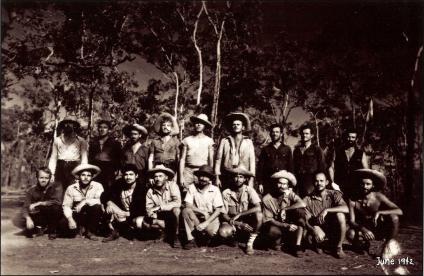South From Corregidor
Submitted by: Timothy Deal
Category: Books

This is a compelling first-hand sea story by the officer who, with 17 sailors, took a small, open boat to Australia as Corregidor was falling. John Morrill commanded the minesweeper USS Quail (AM-15) in the Philippines at the outbreak of World War II. His story includes moving descriptions of their efforts to support the defense of both Bataan and Corregidor including fire support, resupply missions and mine clearing. They are frustrated by the overwhelming Japanese air and sea power but persevere regardless. As the campaign is drawing to a close and the Japanese are preparing to invade Corregidor he, and several of his shipmates, successfully scuttle the Quail and then evacuate all of his crewmen that can still be located from the island. This was done under intense fire and immediately prior to the island's surrender.
Showing great ingenuity and skill, along with a modicum of luck, they successfully take a 36-foot diesel boat south through Japanese controlled waters. Moving mostly at night and using a homemade sextant and some salvaged charts they are able to motor south through the Philippine Islands and along New Guinea before crossing open waters and reaching Darwin in Australia. During this month-long odyssey spanning more than 2000 miles they receive some critical help along the way from local residents in the Philippines. They also manage to literally rebuild the diesel engine so that it could complete the trip.
Mike and Tim Deal have reissued this 1943 book that has been long out of print and have added materials that have enhanced it. Most importantly they provide detailed maps showing the convoluted route taken to provide both sheltered waters and to avoid aerial observation or interception at sea. Since the original book was published in early 1943, the reader could not know what happened to the 18 sailors. In this republished version, with the assistance of the last surviving member of the boat crew, Mr. Lyle Bercier and Morrill's two daughters, the reader will learn what happened to each of the18 escapees. Most impressive, is that they all quickly returned to the fight. Several had ships sunk beneath them subsequently and one of them lost his life during the war. All of them shared an exceptional experience in taking themselves to freedom against severe odds.
About the author:
John H. Morrill was born in Miller, South Dakota, January 7, 1903. He graduated from the US Naval Academy in the class of 1924. In 1939, Morrill assumed command of the minesweeper USS Quail (AM-15). He retired from the Navy in 1955 as a Rear Admiral. During his long Navy career, he was awarded the Navy Cross and Silver Star. Admiral Morrill died on 28 November, 1997.
Read more: http://sfc1942.com
